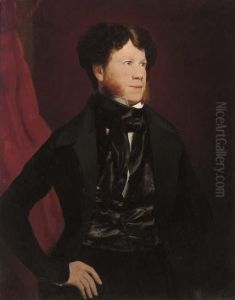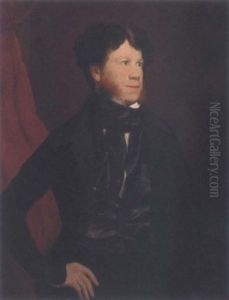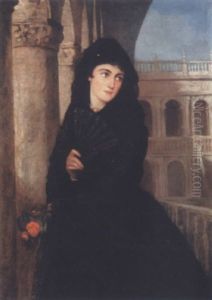George Francis Mulvany Paintings
George Francis Mulvany was an Irish painter and art administrator born in 1809 in Dublin, Ireland. He was part of a family deeply embedded in the arts; his father, Thomas James Mulvany, was also a notable artist of his time. George Mulvany is best known for his contributions to the Irish art scene, both through his own artistic works and his efforts in promoting and supporting the arts within Ireland.
Educated at the Dublin Society's Schools, where he showed early promise as an artist, Mulvany quickly emerged as a skilled painter, particularly in watercolors. His subjects varied from landscapes and architectural studies to historical scenes, capturing the essence of Irish life and scenery with a keen eye for detail and a profound appreciation for the country's history and natural beauty.
In 1824, Mulvany's talents were officially recognized when he won a prestigious prize from the Royal Hibernian Academy (RHA), an institution with which he would have a long and influential association. His career as an artist saw him exhibiting regularly at the RHA, where he became a full member in 1832. Beyond his contributions as an artist, Mulvany's legacy is also defined by his role in the administration of the arts. He served as the first Keeper of the Royal Irish Institution and was instrumental in the establishment and development of the National Gallery of Ireland, where he was appointed the first director in 1861. His tenure at the National Gallery was marked by significant developments, including the acquisition of important works for the collection.
George Francis Mulvany's impact on the Irish art scene cannot be overstated. Through his artistic talents and his dedication to the promotion of the arts, he played a crucial role in shaping the cultural landscape of 19th-century Ireland. Despite facing challenges, including health issues that ultimately led to his resignation from the National Gallery in 1868, Mulvany's contributions have left an enduring legacy. He passed away in 1869, but his work and influence continue to be celebrated in the realms of Irish art and history.



